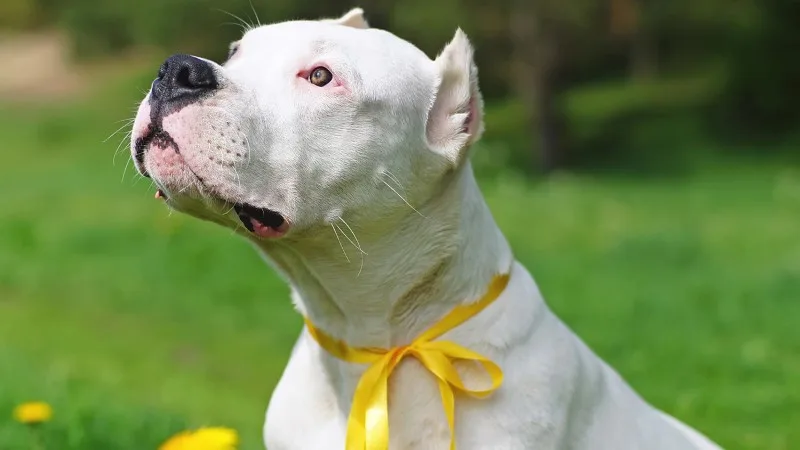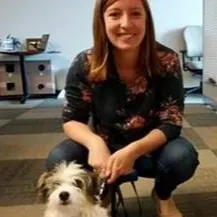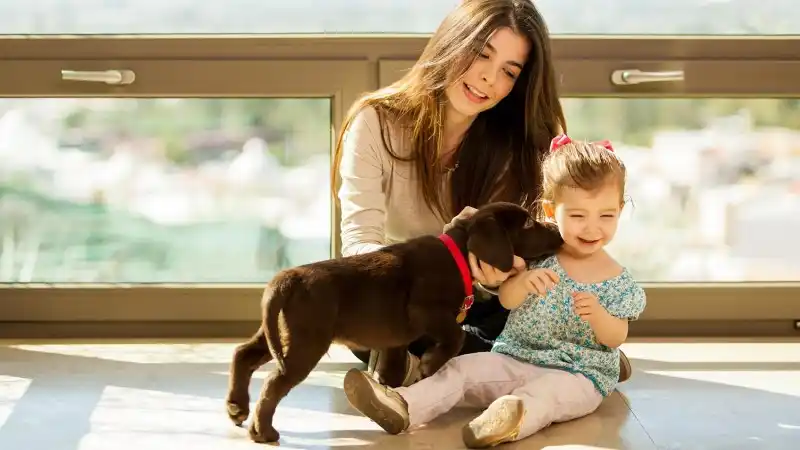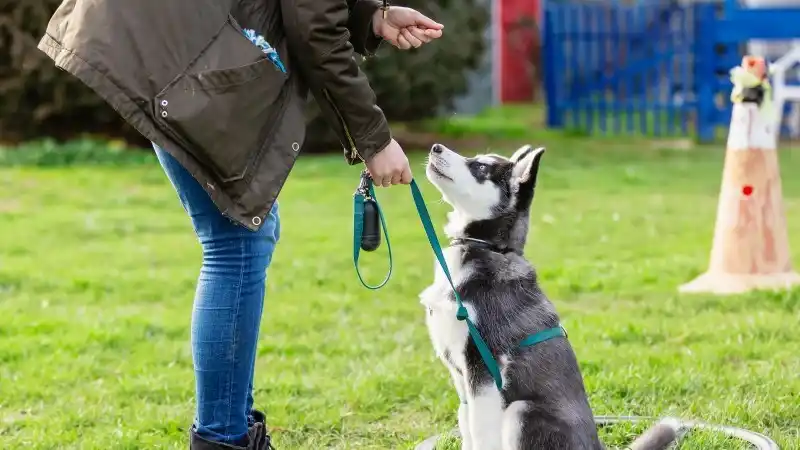The Yellow Dog Project
A yellow collar, leash or ribbon indicates a dog is nervous or has health issues and should not be approached without permission. The Yellow Dog Project lets us know

It’s hard to resist the urge to greet every dog that walks past when you are a dog lover, but should you think twice before reaching out for a quick pat? Have you ever paused to say hello to a dog, only for them to growl or back up behind their owner?
If you love dogs, this can be especially hurtful. But the truth is, an anxious or aggressive dog may not always show signs of fear until it's too late, so the best course of action is to be cautious around new dogs.
Not all dogs are welcoming of human contact -- some are fearful dogs, and they have their reasons for being this way. There's no way to know this about a dog from an introductory greeting, and that's exactly what the Yellow Dog Project seeks to correct.
What Is the Yellow Dog Project?
The Yellow Dog Project is a non-profit organization that educates the public on how to greet a dog safely and reduce bad interactions. Many dog owners are choosing to label their dogs if they need a little extra space in public by tying yellow ribbons to their leashes or collars. This makes it abundantly clear that you’re approaching a reactive dog or a dog who may present with aggressive behaviors if greeted in a manner that sets off their canine anxiety.
Which Dogs Need Yellow Ribbons?
A dog with a yellow ribbon on their leash may need additional space for a variety of reasons, including health issues, separation anxiety, rehabilitation concerns, or training.
Dogs with fear or anxiety challenges may not recognize the friendly intentions of an outstretched hand. Some dogs can be reactive or scared around other dogs and may even be in training to learn how to behave in a positive manner in public settings.
Dogs with a yellow ribbon on their leash are not necessarily aggressive. Just like people, some dogs are more outgoing than others. A dog who prefers their personal space may become defensive when someone unfamiliar gets too close.
Other dogs who wear a yellow ribbon suffer from medical conditions that can cause them to experience pain when they are touched. Someone who pets a dog without asking wouldn’t know when a pat or tussle of the fur might unintentionally cause pain, so a yellow ribbon is a terrific visual reminder to ask owners first before interacting with their dogs.
How to Greet Unfamiliar Dogs
While it is especially important to approach dogs wearing yellow ribbons slowly, there are some basic rules that should be followed anytime you approach an unfamiliar dog, whether they're donning a ribbon or not.
You should not approach a new dog without first asking permission from the dog’s owner. Only pet a dog if the owner gives their approval and the dog is displaying relaxed or playful body language and demeanor. You don’t want to threaten a dog by bending over the top of them to pet their head. Instead, squat down to be on the dog’s level. Do not put your face in the dog’s face or attempt to hug or kiss a dog stranger.
Avoid petting an unfamiliar dog’s muzzle, legs, feet, or tail, as some dogs are sensitive to having these areas touched. You should also understand basic dog body language -- a tail tucked between the hind legs, ears folded back, a lowered head, or a lack of eye contact are all signs that the dog is not comfortable.
Once you have the go-ahead from the dog's owner, slowly increase your "dog voice" to send the pooch the message that you are interacting with them. Then, with your arm outstretched and your palm facing upward, allow them to sniff your hand if they choose to do so. If you have gotten this far and the dog still seems welcoming, you may slowly and gently touch their head or ask for a paw.
Dogs learn who they like -- and who they do not like -- fairly quickly. The 1980's shampoo slogan is an apt description for how dogs feel about the humans they meet: "You never get a second chance to make a first impression." If your first interaction went badly, it will take a lot of work to regain the trust of an anxious dog.
Teaching Children to Greet Dogs
If you have children, remember to explain to them how to approach and interact with dogs of all shapes and sizes. Many kids become excited when they see a dog, bounding off towards them, shoving their hands in their space. This can be scary for dogs and dangerous for children.
To avoid these types of negative interactions, the American Kennel Club has several tips on best practices to prevent dog bites and give canines their space.
Teaching Your Dog to Greet Other Dogs
Ensure you know proper safety when it comes to introducing dogs to one another. Teach your pup how to politely greet their companions and know the signs your own dog displays when they are uncomfortable. Not all dogs like other dogs, so ask their owners before initiating an interaction.
How You Can Help the Yellow Dog Project
Educate those around you about the Yellow Dog Project. Spread the word about why some dogs have a yellow ribbon tied onto their leash and the importance of respecting their need for space. Do your best to be a good dog owner in public spaces – because people learn by example.
If your dog suffers from extreme anxiety or other fears and phobias that make them difficult to take out in public, consider taking them to a veterinary behaviorist to get to the root of the issue. Dog behavior problems are usually fixable, so hang in there, and in the meantime, get a yellow ribbon for your leash and collar!
Take some of the stress out of pet ownership with Accident & Illness Coverage from AKC Pet Insurance (underwritten by Independence American Insurance Company). Our pet insurance plans are designed to be there when you need them, allowing you to focus more on the health of your pet and less on costly veterinary bills. Click here for a quote today!

Mary comes to AKC Pet Insurance with an extensive background in animal care. As a lifelong animal lover, she has a passion for promoting pet health and wellness. Mary lives in Kentucky with her orange kitty, "Cat" and her dog, " Wubbi".
READ MORE ARTICLES

